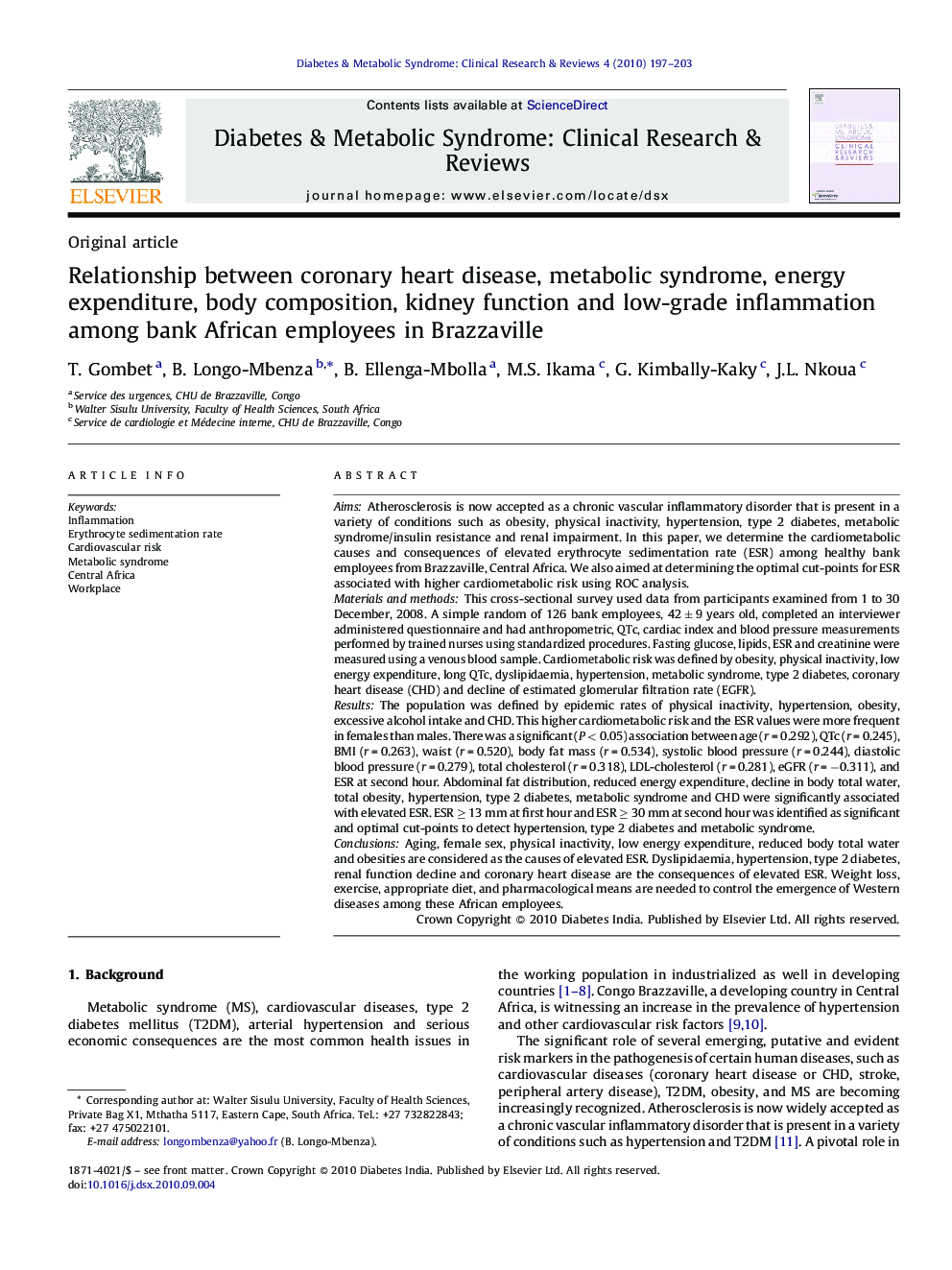| Article ID | Journal | Published Year | Pages | File Type |
|---|---|---|---|---|
| 2910297 | Diabetes & Metabolic Syndrome: Clinical Research & Reviews | 2010 | 7 Pages |
AimsAtherosclerosis is now accepted as a chronic vascular inflammatory disorder that is present in a variety of conditions such as obesity, physical inactivity, hypertension, type 2 diabetes, metabolic syndrome/insulin resistance and renal impairment. In this paper, we determine the cardiometabolic causes and consequences of elevated erythrocyte sedimentation rate (ESR) among healthy bank employees from Brazzaville, Central Africa. We also aimed at determining the optimal cut-points for ESR associated with higher cardiometabolic risk using ROC analysis.Materials and methodsThis cross-sectional survey used data from participants examined from 1 to 30 December, 2008. A simple random of 126 bank employees, 42 ± 9 years old, completed an interviewer administered questionnaire and had anthropometric, QTc, cardiac index and blood pressure measurements performed by trained nurses using standardized procedures. Fasting glucose, lipids, ESR and creatinine were measured using a venous blood sample. Cardiometabolic risk was defined by obesity, physical inactivity, low energy expenditure, long QTc, dyslipidaemia, hypertension, metabolic syndrome, type 2 diabetes, coronary heart disease (CHD) and decline of estimated glomerular filtration rate (EGFR).ResultsThe population was defined by epidemic rates of physical inactivity, hypertension, obesity, excessive alcohol intake and CHD. This higher cardiometabolic risk and the ESR values were more frequent in females than males. There was a significant (P < 0.05) association between age (r = 0.292), QTc (r = 0.245), BMI (r = 0.263), waist (r = 0.520), body fat mass (r = 0.534), systolic blood pressure (r = 0.244), diastolic blood pressure (r = 0.279), total cholesterol (r = 0.318), LDL-cholesterol (r = 0.281), eGFR (r = −0.311), and ESR at second hour. Abdominal fat distribution, reduced energy expenditure, decline in body total water, total obesity, hypertension, type 2 diabetes, metabolic syndrome and CHD were significantly associated with elevated ESR. ESR ≥ 13 mm at first hour and ESR ≥ 30 mm at second hour was identified as significant and optimal cut-points to detect hypertension, type 2 diabetes and metabolic syndrome.ConclusionsAging, female sex, physical inactivity, low energy expenditure, reduced body total water and obesities are considered as the causes of elevated ESR. Dyslipidaemia, hypertension, type 2 diabetes, renal function decline and coronary heart disease are the consequences of elevated ESR. Weight loss, exercise, appropriate diet, and pharmacological means are needed to control the emergence of Western diseases among these African employees.
